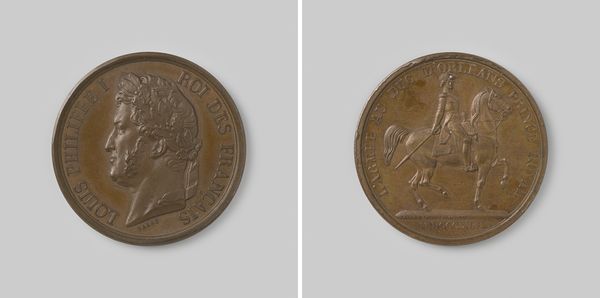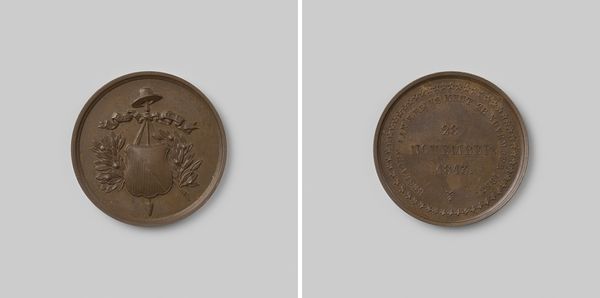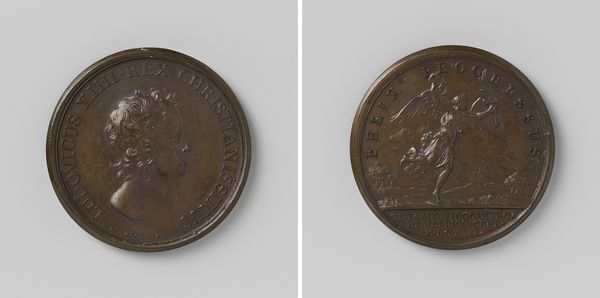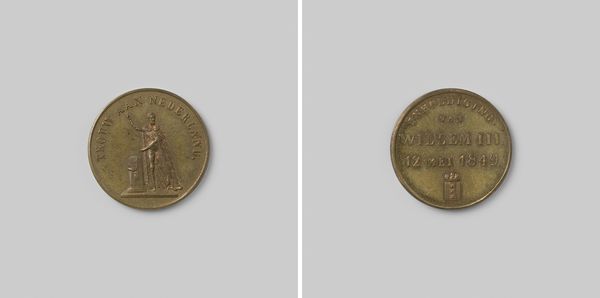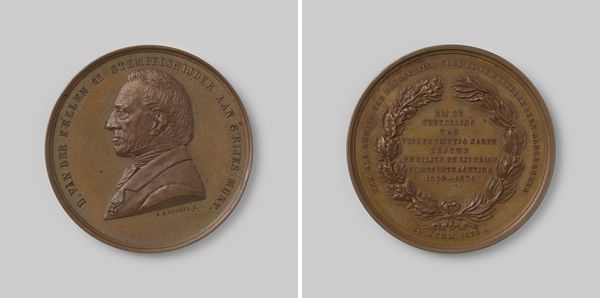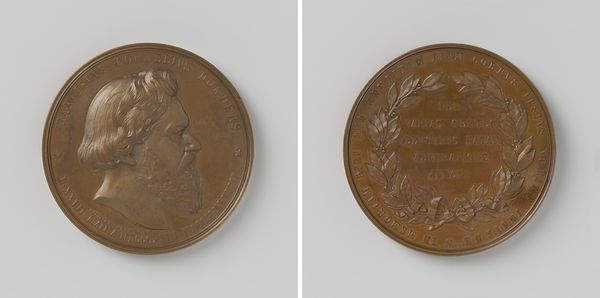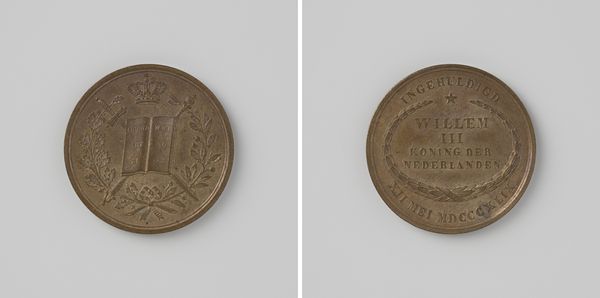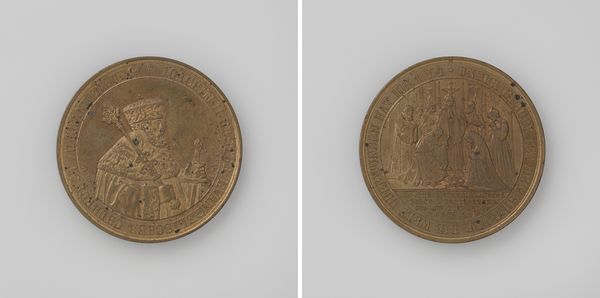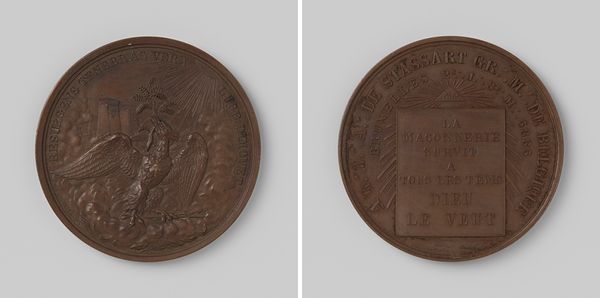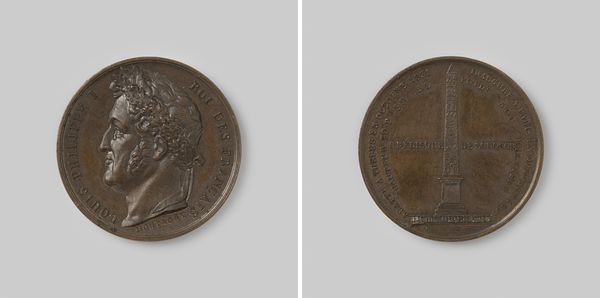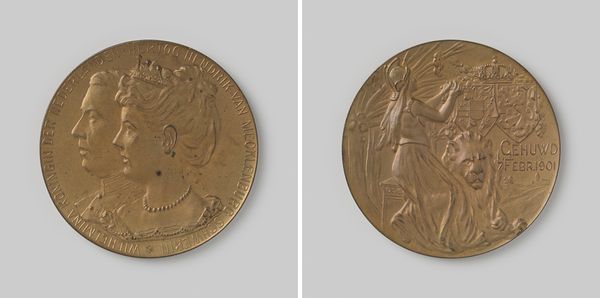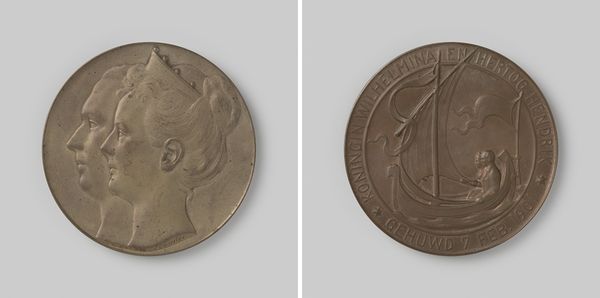
print, metal, relief, engraving
#
portrait
# print
#
metal
#
relief
#
history-painting
#
academic-art
#
engraving
Dimensions: diameter 2.8 cm, weight 10.45 gr
Copyright: Rijks Museum: Open Domain
Editor: So this object is called "Willem III, koning der Nederlanden bezoekt de stad Utrecht", and it was made in 1853. It looks like a metal print, perhaps an engraving of a relief. It feels commemorative, quite stately. What can you tell me about it? Curator: It's a fascinating piece of political imagery, isn’t it? These commemorative medals served as powerful tools for shaping public perception and reinforcing the legitimacy of rulers. Consider the context: Willem III's visit to Utrecht would have been a significant event, carefully orchestrated to project an image of royal authority and connection to the people. Editor: So, the medal is more than just a record; it's propaganda? Curator: Precisely. The very act of creating and distributing such medals was a calculated move. The imagery, like the profile portrait referencing classical antiquity and the royal coat of arms, works to link Willem III to ideas of enduring power and national identity. Where were these distributed and who saw them? How does it connect with Dutch nationalism in the mid-19th century? Editor: That’s interesting. So by distributing this medal, the monarchy solidified its image and standing with the people of Utrecht? Were similar objects widely circulated at the time? Curator: Absolutely. Think about the burgeoning print culture of the 19th century and the increasing accessibility of images to a wider public. These medals were part of a larger visual landscape in which the monarchy actively participated, shaping its narrative through carefully crafted representations of itself. The mass reproduction and dissemination of these objects created a shared visual language. What is really interesting is how images connect the history of art to other aspects of society. Editor: It really makes you think about how even seemingly small objects can have such a large cultural impact. I’ve definitely learned a new way of thinking about historical art. Curator: Yes! Now we can really appreciate how these little objects impacted art as well as society and culture.
Comments
No comments
Be the first to comment and join the conversation on the ultimate creative platform.


